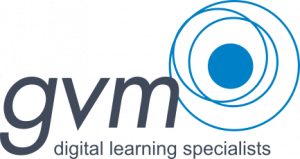Examining how we Buy Learning technology
Currently, about a third of organizations across Australia have indicated in one form or another that they are dissatisfied with their learning platform. This is a staggering statistic and begs the question: Should we re-evaluate our strategies when it comes to the procurement of new Learning Platforms?
Deloitte conducted a Global Chief Procurement Officer survey in 2018. The survey revealed that a “clear shift in procurement focus towards innovation and value requires an acceleration in the pace of change, especially in leadership, talent and innovation.”
I must admit, given my experience in the industry, especially with Local Government, I have not found that this is currently happening. (Of course, there are exceptions).
Most times, Learning and development teams find themselves in a bit of a rut. They stick to what they know. Unfortunately, this continues to yield the same unsatisfactory results, and they find themselves trapped in a vicious cycle.
Often, I find that procurement decisions boil down to price, allocated budget, vendor discounts, or simply opting to renew a contract with an existing vendor due to system familiarity and inertia. None of these reasons are the correct reasons to commit to a Learning Platform, be it an existing one, or a new one.
So, what are the right reasons?
Current Procurement strategies:
Going back to the Deloitte survey for a moment: The top three business drivers identified for procurement were the following:
- Cost (78%)
- New Products/Market Development (58%)
- Risk Management (54%)
Look, none of us would argue that costs aren’t important. This begs the question though: Is that why two/thirds of procurement decisions are currently failing?
If cutting costs outweigh functionality, is it surprising that organisations (Council or otherwise) end up with Learning Systems which are not fit for purpose?
The fact that New Products are second in line in terms of business drivers is significant as well. “New” has always been a powerful driving force in the procurement of any technology. But are we so taken by the allure of new technologies that we’re not considering our organisation’s original requirements?
Let us say your organisation has a very basic use-case for a learning platform. Is it really in your best interest to invest in the shiniest new platform with all the bells and whistles?
This is why it is becoming increasingly important to conduct your business needs analysis objectively before going out to market to begin the procurement process, and sticking to those functionality requirements so that you don’t end up paying for a whole bunch of features that you will never really use.
Time to discard old ways of thinking that no longer serve us:
Deloitte’s 2017 Global Human Capital Trends report concluded:
“The way high-performing organizations operate today is radically different from how they operated 10 years ago. Yet many other organizations continue to operate according to industrial age models that are 100 years old or more, weighed down by legacy practices that must be confronted and discarded before true change can take hold. As organizations become more digital, they must redesign themselves to move fast and adapt more quickly.”
I couldn’t agree more. This “legacy approach” to ICT systems procurement, especially in the Government sector is what is letting a lot of organisations down. In order to evolve, one needs to examine pre-existing strategies, and discard the ones which no longer serve us.
Rethinking your core Procurement Policies:
A principle that applies to the procurement Learning Technology is the transparent collaboration between key stakeholders to ensure a shared understanding of the key business drivers within an organisation. Ultimately, the key focus should boil down to the people you’re training and how you’re supporting their learning and development pathways. That means the tools and technology you invest in must be strategically aligned with those goals and have the characteristics that enable you to move fast and adapt. That means choosing open and flexible technology solutions, supported by vendors that are naturally collaborative.
This should be the driving force that shapes procurement policies guiding all RFIs and RFPs issued by your organisation.
Learning from our Peers:
It is never easy banding together as a collective and buying the most effective Learning Technologies. But organisations which nurture a culture of open dialogue and incorporate the spirit of collaboration usually end up implementing the most effective Learning Platforms.
One way to learn, is to turn to your peers.
On this specific culture of learning, I must say I applaud the spirit of collaboration I have seen in Australian Local Government and their willingness to trade stories and ideas between each other.
At global vision, we are very proud of having nurtured a community of over 40 council clients across the country (of varying sizes and personalities) involved in buying and using learning technologies that include platforms, authoring tools, content and other learning-related products and services.
And that is precisely why we work so hard to create a collaborative synergy amongst our council clients so that they can come together and have a platform to share their experiences and connect with each other.
